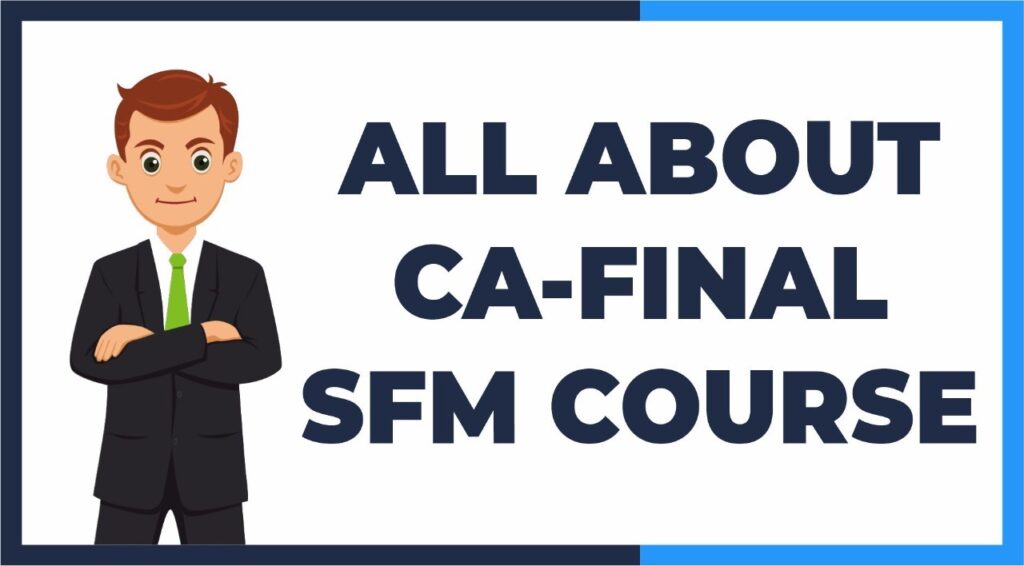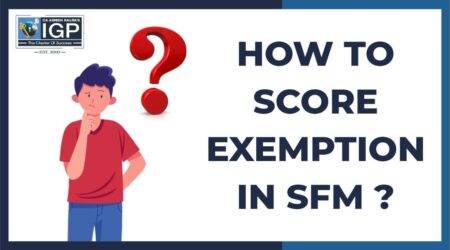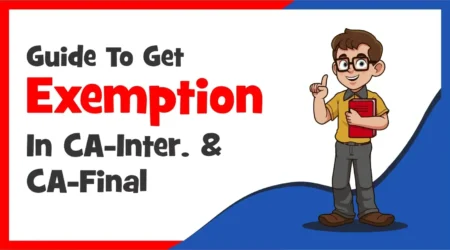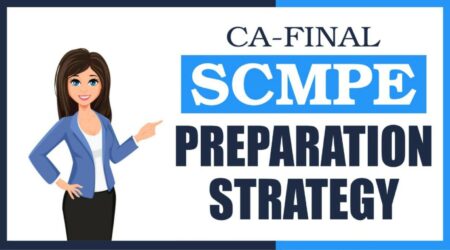ALL ABOUT CA FINAL SFM COURSE
Strategic Financial Management is Paper 2 of CA Final Curriculum. It is just an advanced version of Financial Management studied by you at your CA Intermediate level (Paper 8). So, if you really want to understand the concepts of CA Final SFM well, you should firstly revise all the concepts of CA Inter FM from short notes or pocket book, whatever you have. The objective of putting this paper in CA Final is to help the students acquire the ability to apply financial management theories and techniques in strategic decision making. For those who want to pursue a career in Finance, CA Final SFM is going to form a base and will prove to be very helpful. It contains the following chapters:

- Financial Policy and Corporate Strategy: It gives you a basic idea of strategic financial decision-making framework, strategy at different hierarchy levels, financial planning, interface of financial policy and strategic management, and balancing financial goals with sustainable growth.
- Risk Management: This chapter basically revolves around identifying various types of risks faced by an organization, evaluation of financial risks, calculating Value at Risk and evaluating appropriate method for identification and management of financial risk.
- Security Analysis: This chapter teaches you Fundamental and Technical Analysis and Efficient Market Hypothesis (EMH) Analysis.
- Security Valuation: The basic aim of this chapter is to give you an overview of valuation, return concepts, equity risk premium, required return on equity, discount rate selection in relation to cash flows, and valuation of equity shares, preference shares and debentures/ bonds.
- Portfolio Management: This chapter talks about activities, objectives, and phases of portfolio management, portfolio theories, risk analysis, Markowitz Model of Risk – return optimization, Capital Market theory, Sharpe Index Model, CAPM, Arbitrage Pricing Theory Model, Portfolio Evaluation Methods, Sharpe’s Optimal Portfolio, Formulation of Portfolio Strategy, Portfolio Revision and Rebalancing, Asset Allocation Strategies, Fixed Income Portfolio, and Alternative Investment Strategies in context of Portfolio Management.
- Securitization: This chapter gives a deep insight into the meaning, concept, definition and benefits of securitization. It also talks about the participants, mechanism and problems in securitization, securitization instruments, pricing of securitization instruments, and securitization in India.
- Mutual Funds: This chapter helps understand the basics of mutual funds, evolution of mutual funds, classification of mutual funds, types of schemes, advantages and drawbacks of mutual funds, and terms associated with mutual funds.
- Derivatives Analysis and Valuation: It is a chapter giving details about various kinds of derivatives like forward and future contract, options, swaps, commodity derivatives, and embedded derivatives.
- Foreign Exchange Exposure and Risk Management: This chapter covers exchange rate determination, foreign currency market, management of transaction, translation and economic exposures, hedging currency risk, and foreign exchange derivatives – forward, futures, options, and swaps.
- International Financial Management: In this chapter, the following topics are covered – international capital budgeting, international sources of finance, and international working capital management.ALL ABOUT CA FINAL SFM COURSE
- Interest Rate Risk Management: It includes interest rate risk and hedging interest rate risk (including interest rate derivatives).
- Corporate Valuation: This chapter provides a conceptual framework of valuation, approaches/ methods of valuation, measuring Cost of Equity, relative valuation, other approaches to value measurement, and arriving at fair value.
- Mergers, Acquisitions and Corporate Restructuring: This chapter comprises of conceptual framework, rationale, forms, financial framework, takeover defensive tactics, reverse merger, divestiture, financial restructuring, ownership restructuring, premium and discount, mergers and acquisitions failures, acquisition through shares, and cross border mergers.
- Startup Finance: It consists of Introduction of Startup finance, pitch presentation, sources of funding, and startup financing through Venture Capital Financing.
Related: CA Final Course 2024
The whole curriculum of CA Final SFM is designed in such a way so as to give a comprehensive knowledge of all the relevant topics of Corporate Finance. Therefore, it is better to go for its coaching from a reputed, knowledgeable and experienced teacher who can make you understand the subject deeply. You can also do self – study but it will be time consuming, as all topics are not easy to understand.
One thing which must be noted here is that CA Final SFM is not only Stock Market, but it also has many other topics too. The paper consists of both, theoretical and practical questions. Therefore, nothing should be left. More and more questions should be practiced for a better grip on this subject. It is a very high scoring subject if proper preparation is done. All the topics must be understood deeply. It is also equally important to practice MTPs, RTPs, Past Year Papers, etc. This will definitely help you in getting distinction in this subject. Consistency is also equally important to pass with flying colors in CA Final SFM because –
“Where there is lack of consistency, chaos lives.”
Other than this, I would also like to advise you to gain Practical Knowledge of Stock Market while studying SFM. Many teachers provide some basic knowledge during the classes itself. Learn from them. Start investing. It will help you a lot in future by increasing your passive income.
All the best !













Leave a Reply